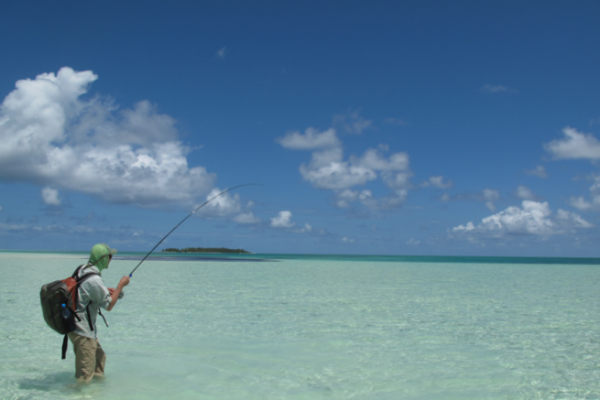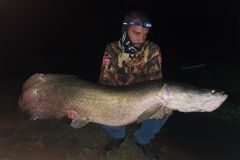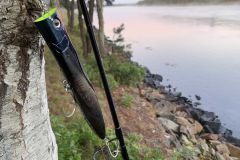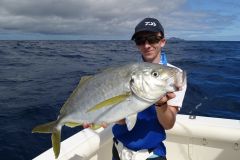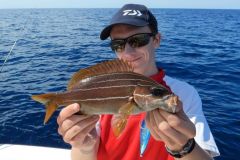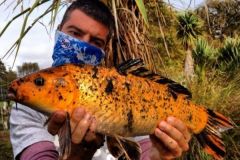The grey ghost
The bonefish is commonly known as the ghost of the flats. In fact, its mimicry is so impressive that it can be difficult to spot if you're not used to it. It is often grey, sandy or with a greenish back, depending on the nature of the bottom. This is the first part of his fishing: finding the right spots, and seeing them evolve underwater so as to present them with our fly.
Very often, you'll be guided, and in this case, the guide will be there to help you. In fact, he'll do almost all the work! Except the throwing.
In the other case, this phase can be quite complex, especially on a first trip and for the first time.
It's often after a first capture that our eye begins to know what to look for. But it's important to have already done so! Take a good look at your bonefish as you release it, and do the same for each fish, following it as far as your eyes will allow.
Then, with practice, it becomes easier to see that shadow or shape moving in little water.
Sometimes, it's the caudal fins that stand out slightly from the water and attract your attention. But you still need to keep an eye out. These actions, where the fish is tailing like everyone dreams, are the ones where the angler has to be the most precise and where the adrenalin rush is the most violent! But it's difficult fishing, as the fish in this case are in very little water and therefore all the more wary.
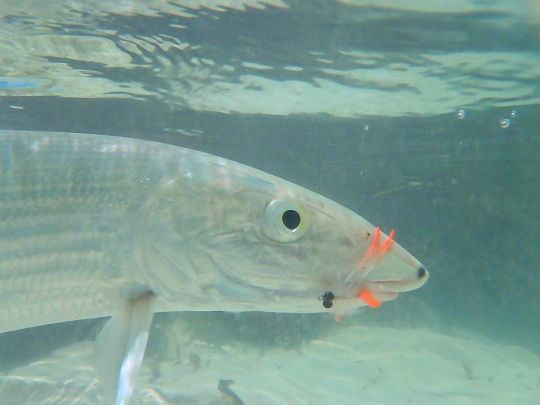
Food and imitations for bonefish fishing
Bonefish come to feed in little water, mainly on sandy, sandy-muddy bottoms, but also occasionally on turtle grass to find their food.
It mainly consists of shrimps of all kinds, but also crabs, small marine worms, shellfish and even small fish. It remains an opportunistic fish that can attack all types of prey.
Fishermen mainly use small shrimp imitations mounted on strong iron sea hooks in sizes 2-4-6, sometimes even 8. Pink, tan, cream and olive are the most popular colors. They are ideal for intercepting fish movements and slow to very fast action. In the case of fast-moving bonefish, this is the fly of choice, as it will enable you to bring the fly back into its path by adapting your strips or pulls more or less quickly according to the fish's behavior.
These flies are bright enough to attract their attention and simulate their usual prey. Different variations exist by adding plastic legs, coloured tags and other tricks, and varying the weighting according to depth and/or current.
Crabs are rarely used by anglers, even though they are very effective in smaller sizes, and bonefish love them! They are used in slightly different conditions, notably when bonefish are moving slowly along the flats.

Top 10 best bonefish flies
Here are the names of the models you absolutely must have in your boxes in size 4/6/8 and in the above-mentioned colors:
- Crazy charlie
- Gotcha
- Verveka shrimp
- EP spawning shrimp
- Olive crab
- Tan crab
- Bonefish Bitter
- Silli legs shrimp
- Squimp
- Nail minnow
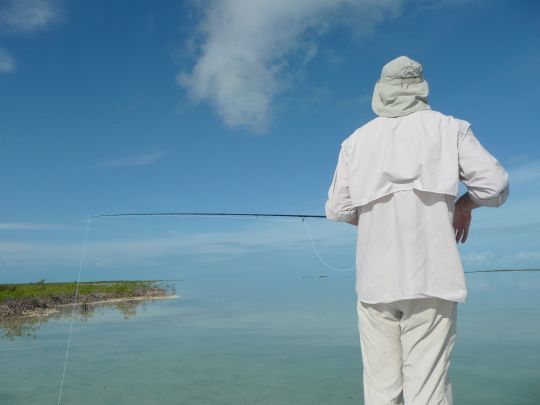
Fish positions and behavior
Bonefish move with the tides, whether rising or falling. This movement of water moves the prey they seek and pecks here and there during their feeding phase.
Your guide will take you to several spots as the tide rises, and where bonefish should be actively feeding.
Depending on the destination, bottoms and positions may be a little different, but in all cases, bonefish will come between 20 cm and 40 cm of water, or even more, of course, which allows us to spot them and fish them on sight.
Favourite spots are mangrove edges, sandy beaches, sandy-silty bottoms and the rich turtle grass flats, where shrimps, small crabs and other prey will move or be carried away by the current.
As with all fishing, the most difficult thing is to know when and where they will come to a particular spot. It's only through observation and knowledge that you can regularly find these fish.
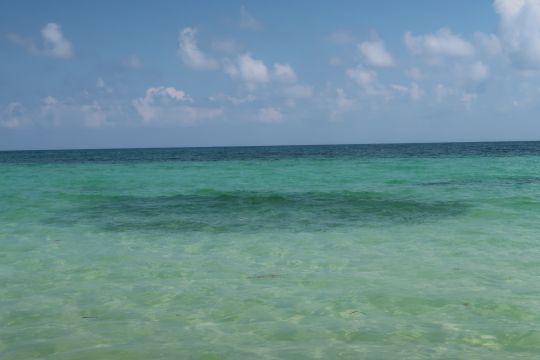
Presentation and animation according to conditions
Bonefish are constantly on the move in search of food. They swim very close to the seabed, as they feed with their mouths glued to the bottom, even if they are chasing a small fish, as is often the case at Los Roques, for example.
They can change color depending on the substrate, which can sometimes make them difficult to spot, especially on slightly darker bottoms.
The best fishing situation is to come across a small group of bonefish that are not moving too fast and are feeding like crazy. Competition for food will not only increase your chances of a catch, but also allow you to present your fly on different fish in case of refusal.
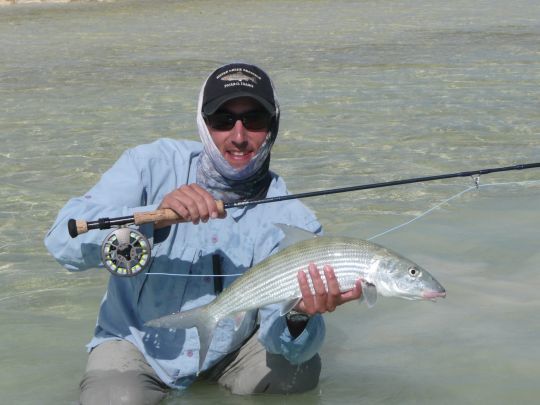
Depending on their swimming speed and the depth of the spot, you'll need to place your fly more or less far from the lead fish, to intercept their trajectory by depositing your fly as delicately as possible. The less water there is, the more precise and discreet you need to be. In this case, a small, lightly weighted fly in size 6 or even 8 is preferable.
The animation consists of short dry pulls or strips of 10-20 cm alternated with pauses, as it is important that the fly falls back to the bottom. A beginner's main mistake is to strip too quickly and never let the bonefish take the fly. The choice of fly size and weight is very important.
You also need to analyze the fish's behavior to know whether you need to speed up or slow down to trigger the prehension.
In other cases, fish are less observant and can be more aggressive. It also depends on the time of the tide and whether they start or finish their meal!
In some situations, bonefish are herded together in a flock called a "mudding". This expression comes from the word "mud". The abundance of feeding fish lifts the mud and can be seen from afar.
In this case, fishing is not very technical. All you have to do is cast "into the heap" to get a fly!

 /
/ 